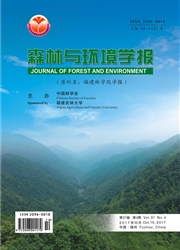

 中文摘要:
中文摘要:
我国山区特殊的地形、地质及气候条件造成泥石流灾害频繁发生,严重危害居民生命财产安全并限制山区经济社会可持续发展。国内外泥石流防治研究取得显著成效,但还需要研究如何合理搭配治理措施以满足泥石流防治的需求。本文简要介绍我国泥石流防治技术,主要内容有综合防治技术体系、植物工程措施、岩土工程措施、以及植物工程措施与岩土工程措施的有机结合。探讨了以主河输沙能力为控制条件,以地理条件和微地形因子为植物种类选择依据,坡面治理与沟道拦蓄配合,形成“坡面——沟道——小流域”的多级径流和固体物质调控体系。为了做好泥石流防治工作,今后应该加强植物措施治理泥石流的机理研究。评价植物措施的功能并编制设计技术规范,完善植物工程措施与岩土工程措施结合的综合治理体系。
 英文摘要:
英文摘要:
Due to special topographical, geological and meteorological conditions, debris flows occur frequently and result in heavy losses of lives and properties in mountainous areas, which become a great threaten to the sustainable development of regional economy and society in western China. At present, debris-flow prevention has performed well in many mountainous countries and has made headway in early warning, disaster mitigation by structural engineering methods, and risk analysis and management. In this paper, debris-flow prevention techniques have been introduced from the aspects of botanical methods, geotechnical engineering methods, and synthetic prevention system based on the above two methods. In addition, the treatment system of multilevel runoff and unconsolidated soil in the catchment with a chain of "slope-gully-valley" is set up in consideration of sediment load of main rivers, incorporation of slope improvement and gully retention, as well as micro-site factors for matching species with the site. Furthermore, attentions should be paid to the mechanism and technical details of vegetation measures for debris-flow prevention, as well as effective incorporation between botanical method and geotechnical method.
 同期刊论文项目
同期刊论文项目
 同项目期刊论文
同项目期刊论文
 Analysis on mechanism of landslides under ground shaking: a typical landslide in the Wenchuan earthq
Analysis on mechanism of landslides under ground shaking: a typical landslide in the Wenchuan earthq Dynamic process analysis for the initiation and movement of the Donghekou landslide-debris flow trig
Dynamic process analysis for the initiation and movement of the Donghekou landslide-debris flow trig Finite fault modeling for the Wenchuan earthquake using hybrid slip model with truncated normal dist
Finite fault modeling for the Wenchuan earthquake using hybrid slip model with truncated normal dist Case history of the disastrous debris flows of Tianmo Watershed in Bomi County, Tibet, China: Some m
Case history of the disastrous debris flows of Tianmo Watershed in Bomi County, Tibet, China: Some m Hazards on dujiangyan-wenchuan highways induced by catastrophic debris flows on July 10 2013 and pre
Hazards on dujiangyan-wenchuan highways induced by catastrophic debris flows on July 10 2013 and pre Stochastic simulation of ground motions of the Wenchuan earthquake using slip-based corner frequency
Stochastic simulation of ground motions of the Wenchuan earthquake using slip-based corner frequency Development of strut-and-Tie model and design guidelines for improved joint in decked bulb-Tee bridg
Development of strut-and-Tie model and design guidelines for improved joint in decked bulb-Tee bridg Analysis of Dynamic Responses of Bridge-approach embankment transition section of high-speed Railway
Analysis of Dynamic Responses of Bridge-approach embankment transition section of high-speed Railway Sediment rock magnetic properties indicate outburst events for Gega dammed lake at the Tsangpo Gorge
Sediment rock magnetic properties indicate outburst events for Gega dammed lake at the Tsangpo Gorge 期刊信息
期刊信息
